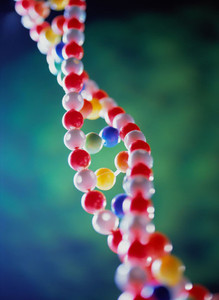“Why does the manufacturing process play such a prominent role in the definition of a biosimilar?” asked Professor Theo Dingermann of the Goethe University in Frankfurt, Germany, at the Weekend Workshop ‘Patient and Pharmaceutical Care’ of the German Union of Pharmacists Societies (Bundesvereinigung Deutscher Apothekerverbände, ABDA) held on 17–18 October 2009 in Hannover, Germany.
He explained that all biosimilars are proteins – just like all genetically produced active ingredients. “These cannot be produced by a classical chemical process, because most of them are of enormous size. In fact they are produced by the biochemical machinery of a living cell. This makes extremely heavy demands to, especially, the purification process in order to get an effective and tolerable active ingredient at last,” he said.
Professor Dingermann stressed that proteins are chemical compounds whose function does not only depend on their pure chemical structure, but also on a kind of ‘superstructure’ that is of outstanding importance and defines the active state of the protein. This results from the complex ‘clew structure’ – the tertiary structure – and from molecular modifications of the very large molecule, which are incorporated only after the actual protein synthesis. While universal biological principles make sure that the huge molecular fibre of the original protein is identical with the copy, subtle process characteristics guarantee the right ‘coiling’ of the protein fibre and the right post-translational modifications.
“Today you can indeed copy such processes to the greatest extent, but you can never succeed in this [for] a 100 percent,” said Professor Dingermann. “Despite these marginal differences, however, the original and the ‘copy’ can be similarly efficacious and tolerable. And that’s the reason why we have ‘biosimilars’ today, which deliberately – following the classical ‘generics’ – are not called ‘biogenerics’ because one takes notice of the smallest differences very honestly. However, the manufacturer of a biosimilar must prove to the approval authorities that he has developed a process that produces an equally functioning and tolerable protein as the manufacturer of the original”.
Professor Dingermann told the audience that this proof is not just given analytically, in which it is shown that both the activity rate of the active ingredient and the purity of the active ingredient preparation correspond with the reference compound as exactly as possible. “In contrast to classical generics, biosimilars must also pass through a clinical trial programme. This trial programme is designed in such a way that on the one hand evidence is provided for a similar clinical efficacy to the originator product, but on the other hand that its clinical innocuousness can be assumed”.
Professor Dingermann said that based on the data of these clinical trials, but also on the most extensive documentation about the complete manufacturing process, the extensive analysis programme and thorough on-site inspections of the plants by the approval authorities, the biosimilars are then scientifically evaluated by the EMEA and finally approved by the European Commission. “After approval of a biosimilar, safety risks that have not been sufficiently eliminated by the performed clinical study are minimised via a ‘post-marketing surveillance programme’. This especially concerns the risk of a disproportionate high immunogenicity, though it is generally accepted today that almost all biologicals induce a – usually passing and normally tolerable – immune response”.
References:
Professor Theo Dingermann. Biosimilars – Business as usual oder eine neue pharmazeutische Herausforderung. ABDA Wochenendworkshop Patient und Pharmazeutische Betreuung;17-18 October 2009; Hannover, Germany.
Pharmazeutische Betreuung: Mut zur Kommunikation. Pharmazeutische Zeitung. 43/2009.
Source: ABDA Wochenendworkshop Patient und Pharmazeutische Betreuung; Pharmazeutische Zeitung








 0
0











Post your comment